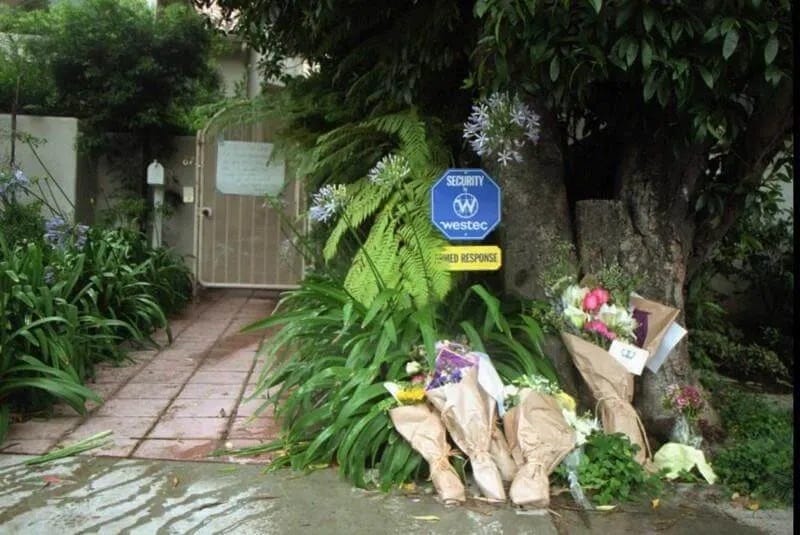insight - Criminology - # Firsthand Account of Life on the Street Where the O.J. Simpson Murders Occurred
Living on Dorothy Street During the Infamous O.J. Simpson Murder Trial
Core Concepts
The author's personal experiences and observations of living on Dorothy Street, just a block away from the site of the murders of Nicole Brown Simpson and Ron Goldman, during the highly publicized O.J. Simpson murder trial.
Abstract
The author recounts his experiences living on Dorothy Street in Brentwood, Los Angeles, just a block away from the site of the murders of Nicole Brown Simpson and Ron Goldman in 1994. He describes his chance encounter with O.J. Simpson years earlier at a nightclub, and how he later ended up renting an apartment on the same street where the infamous murders took place.
The author provides detailed observations of the neighborhood during the trial, including the constant presence of tourists and "O.J. Lookee-Loos" coming to take pictures of the murder site, the struggles of local businesses like the Mezzaluna restaurant, and the eerie quietness of Bundy Drive at night - a potential escape route for the killer. He also mentions some of the local residents who became witnesses in the trial, such as the dog walker Robert Heidstra and actress Gloria Stuart.
The author reflects on his own speculations and questions about the murders, wondering what he would have done if he had witnessed the killer fleeing the scene. He also notes how the O.J. Simpson trial had a lasting impact, influencing the rise of figures like the Kardashians and Harvey Levin, and sparking ongoing debates about race and the LAPD.
In the end, the author revisits the neighborhood years later, finding that the street has moved on, with no more "Lookee-Loos" and the quiet, residential character of Dorothy Street restored.
Life on Dorothy Street during the O.J. Simpson Trial
Stats
"He was also a good 22 years senior to us, and at least 15 years older than anyone else there."
"875 South Bundy Drive, the condo owned by Nicole Brown Simpson, wasn't in a traditional "condo" complex."
"Gloria Stuart, then in her 80s, who lived almost directly across the street from Nicole Simpson's condo, in a lovely house on South Bundy Drive."
Quotes
"Which one do you like?" O.J. Simpson queried, as he leaned over to me on the railing of the upper floor of the Red Onion Night Club in Palm Springs.
"The one in the yellow has the bigger boobs." - O.J. Simpson
Key Insights Distilled From
by Terry Keefe at terrykeefe.medium.com 04-11-2024
https://terrykeefe.medium.com/life-on-dorothy-street-during-the-o-j-simpson-trial-87730dedef46
Deeper Inquiries
How did the author's personal encounter with O.J. Simpson at the nightclub years earlier shape his perspective on the murders and the trial?
The author's personal encounter with O.J. Simpson at the nightclub years earlier provided him with a unique insight into the celebrity persona of O.J. Simpson. This encounter shaped his perspective on the murders and the trial in several ways. Firstly, it humanized O.J. Simpson in his eyes, making him more than just a distant celebrity but someone he had interacted with on a personal level. This personal connection may have influenced his initial reactions to the news of the murders and the subsequent trial. Additionally, the author's encounter highlighted O.J. Simpson's celebrity status and the impact it had on those around him, including the author himself. This experience likely made the author more attuned to the media frenzy and public fascination surrounding the case, as he had experienced a glimpse of it firsthand during his encounter with O.J. Simpson.
What other insights or perspectives could have been gained from interviewing other residents of Dorothy Street during this time period?
Interviewing other residents of Dorothy Street during the time of the O.J. Simpson trial could have provided a wealth of additional insights and perspectives. Firstly, it could have shed light on the impact of the trial on the local community, including how residents coped with the increased media attention and influx of tourists. Residents' experiences and observations could have offered a more nuanced understanding of the neighborhood dynamics during that tumultuous time. Furthermore, interviewing other residents may have revealed different reactions to the trial, varying levels of engagement with the case, and diverse opinions on the verdict and its implications. Their perspectives could have added depth to the author's narrative and provided a more comprehensive portrayal of life on Dorothy Street during the O.J. Simpson trial.
What broader societal implications or lessons can be drawn from the lasting impact of the O.J. Simpson trial, beyond just the local neighborhood dynamics described in the article?
The lasting impact of the O.J. Simpson trial extends far beyond the local neighborhood dynamics described in the article, offering broader societal implications and lessons. One significant aspect is the trial's role in highlighting issues of race, celebrity, and the criminal justice system. The trial brought to the forefront discussions on racial tensions, police conduct, and the influence of fame and wealth in legal proceedings. It underscored the complexities and challenges of high-profile cases and their implications for public perception and trust in the justice system. Additionally, the O.J. Simpson trial serves as a case study for media sensationalism, trial by public opinion, and the intersection of entertainment and news. It prompts reflection on how media coverage shapes public discourse, influences legal outcomes, and impacts individuals' lives. Overall, the trial's enduring legacy offers valuable insights into the complexities of justice, race relations, and the intersection of law and celebrity in contemporary society.
0
